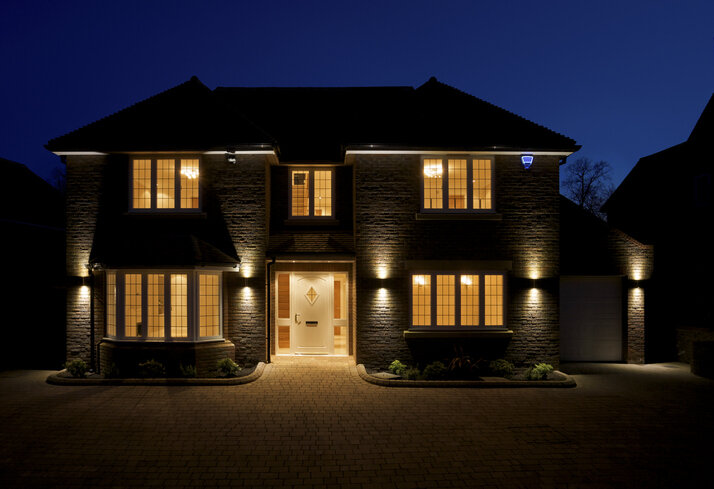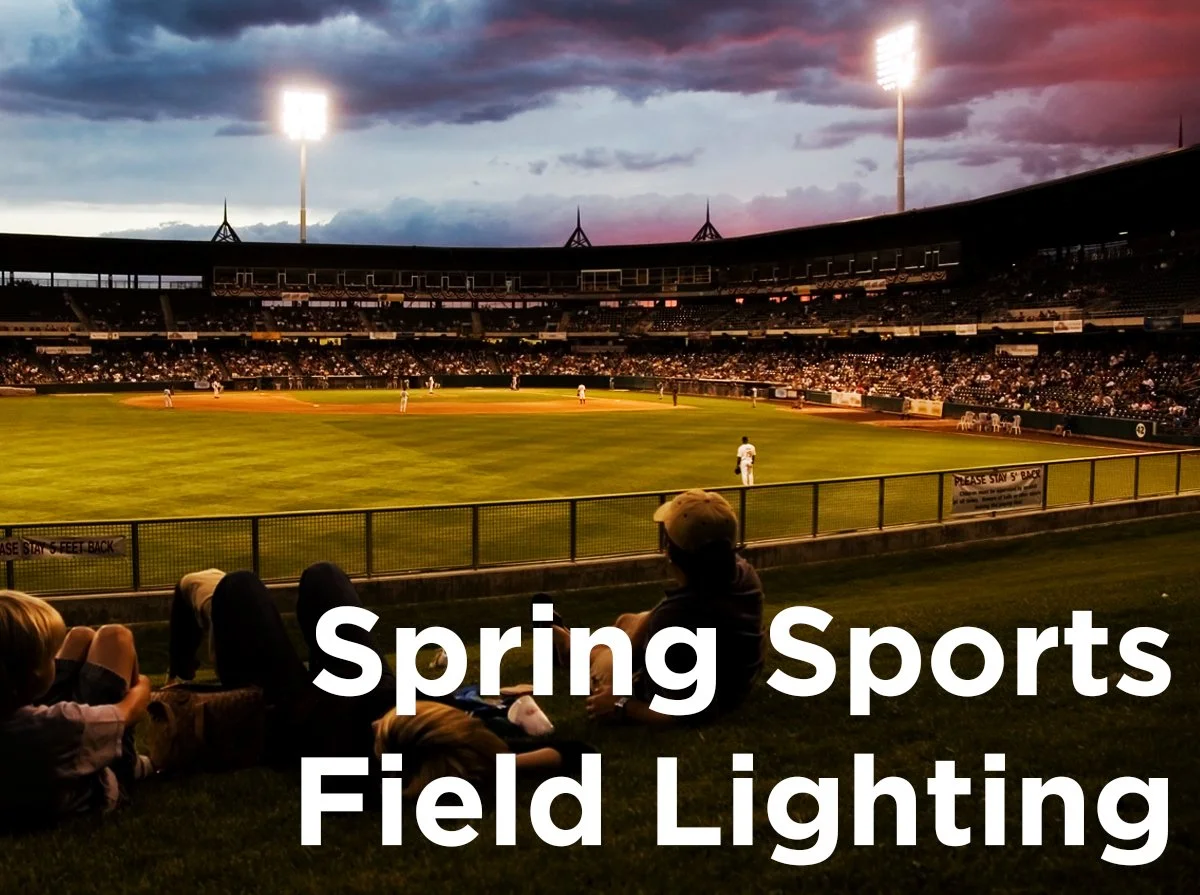Landscape Lighting 101
Ready for summertime house parties? Make sure people can find your house and show off your gardening skills (or the skills of the gardener you hired) by adding or upgrading your landscape lighting. Also good for security, we’ll teach you about the different types of landscape lighting and where to use them.
Flood Fixtures
Usually when people think landscape lights, they first think of flood light fixtures. These fixtures are used to illuminate large areas like the side of the house. Flood lights can be used to create a couple of different lighting effects common in the world of landscape lighting. The first and easiest to accomplish is called wall washing. This technique is usually used to spread a uniform light across the entire facade of the house. The reverse of the wall washing technique is called wall grazing. Use this lighting effect to really show off the textures of things like tree trunks, stone and brick walls, or even climbing vines. To achieve proper wall grazing place the fixture within a foot of whatever object you’re highlighting and point the light straight up. Another cool lighting effect is known as shadowing, where an object is between the flood light fixture and the wall so that it creates, you guessed it, a shadow.
Bullets and Spot Lights
While similar to flood lights, bullets and spot lights have narrower beam angles to light up focal points instead of larger areas. They can be installed on the ground to aim up at statues, fountains, or flag poles in a technique known as uplighting but can also be placed in trees and aimed downward by using the moonlighting technique.
Wall Light Fixtures
Whether it’s guiding the pizza delivery driver to the door or helping you locate the keyhole at night, wall light fixtures are an essential part of landscape lighting. These fixtures are mounted next to entryways like the front and back doors. They should be bright enough to see from the street, driveway, or sidewalk without being so bright that it blinds whoever is at the door. Look for fixtures that are shielded or have a frosted cover to help reduce the glare.
Security Lights
Arguably the most important part of landscape lighting is the security lights. Many security lights could fall under other landscape lighting types. So what makes a light fixture a security light? The answer is a combination of photocells, motion sensors, color temperature, and timers. Photocells and timers allow the lights to come on as the sun goes does and turn back off as the sun rises giving you light just when you need it without the risk of forgetting to flip that switch. Motion sensors (spoiler alert) sense motion. These handy devices just turn on when a person, car, possibly a cat comes into range. Just be sure the light isn’t aimed into your neighbor’s windows. The color temperature of the light may not seem too important, but studies have shown that security lighting with cooler color temperatures of at least 4000K, are more effective since the white isn’t too yellow or too blue to affect how colors are perceived.
Pathway Lights, Bollards, and Well Lights
With the house and foliage properly lit, it’s time to add the finishing touches. Pathway lights are used to help illuminate sidewalks, pathways, and other walking paths by casting light down onto the ground. Bollards are used similarly, but the light isn’t as directional. In ground well lights can also be used along pathways, but since the light is directed upward, these fixtures are better suited for uplighting.
Need help figuring out where to start on your lawn or do you already have everything lit up for the whole world to see? Be sure to leave any questions, concerns, or advice in the comment section below. For more tips and tricks be sure to follow us on Facebook, Twitter, LinkedIn or Pinterest.








